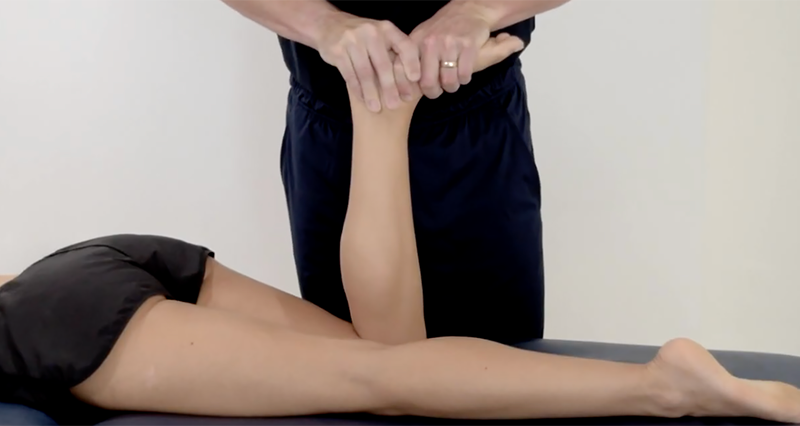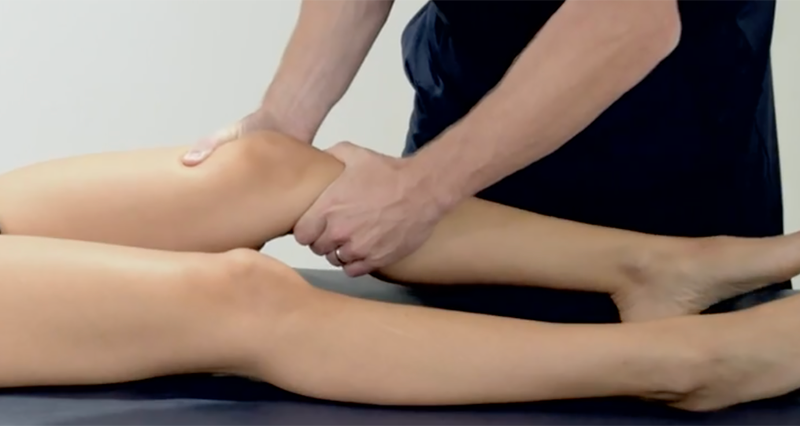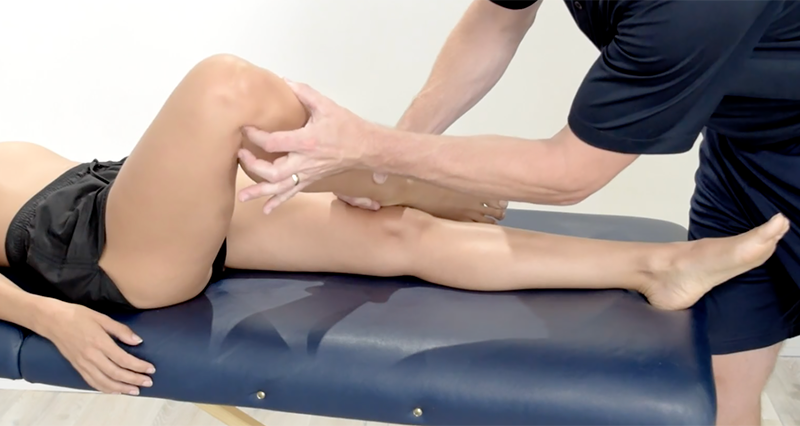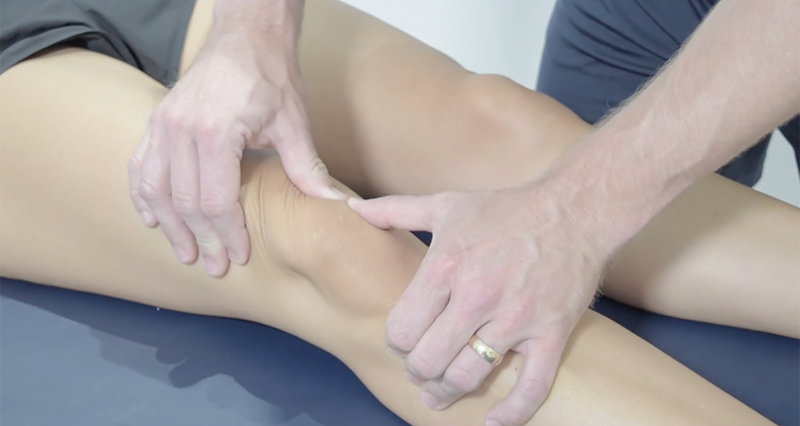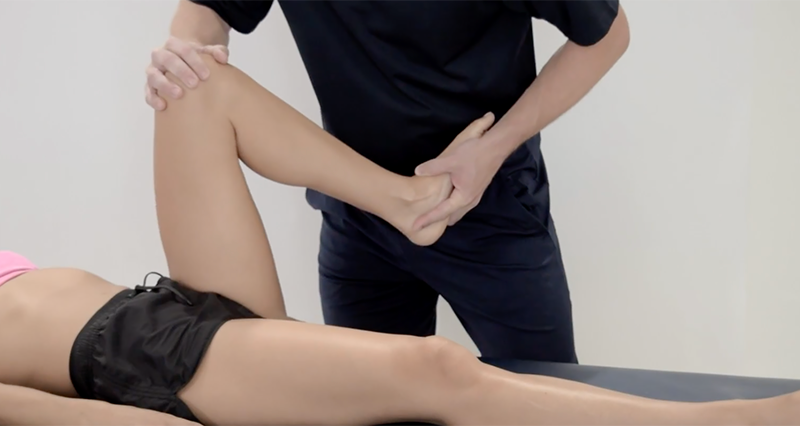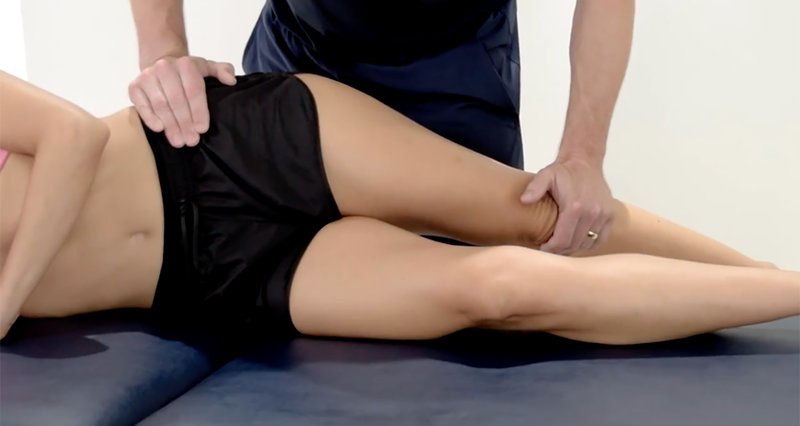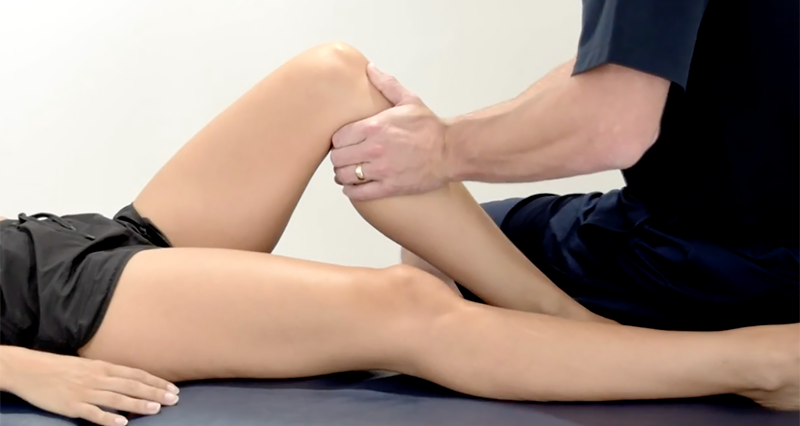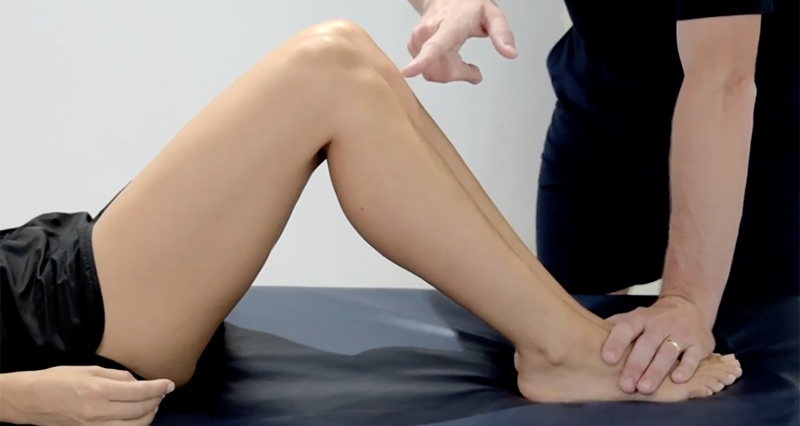The valgus stress test checks for injuries to the medial collateral ligament (MCL) by applying pressure to this ligament inside the knee. The MCL is a key ligament on the inner side of the knee that helps stop the knee from bending outward too much.
What is a Medial Collateral Ligament – MCL Sprain?
An MCL sprain, or medial collateral knee ligament sprain, involves a tear of the ligament inside the knee. This injury often results from sudden twisting or direct impact, especially when the knee is slightly bent. Sometimes, it develops gradually over time. Typically, the sprain occurs when a strong force hits the outside of your knee, stretching and potentially tearing the medial ligament fibres inside.
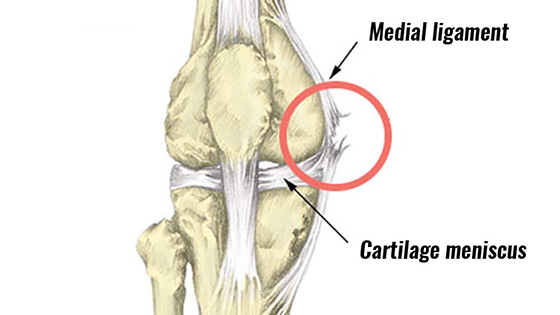
How to perform the Valgus stress test
First, the patient typically lies down or sits on an examination table with the knee flexed to about 20-30 degrees. Then, on the side of the affected knee, you stabilize the thigh with one hand and place the other just below the knee joint on the lower leg. Initially, you may inspect and palpate the knee for swelling, tenderness, or instability.
Next, with the knee slightly bent, a gentle valgus stress is applied. This involves pushing the lower leg laterally, away from the body’s midline, while holding the thigh steady. This action tests the MCL by putting it under tension.
During this test, you observe how much the knee joint opens on the medial (inner) side. Normally, there should be little to no gap, signalling that the MCL is stable.
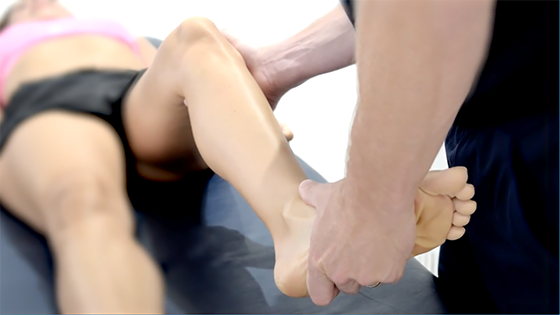
What is a positive Valgus stress test?
A positive test result means that when the knee is examined, one side of the knee has an excessive medial opening or gapping of the knee joint more than it normally should or more than the other, unaffected knee. This could indicate that the medial collateral ligament (MCL), which helps stabilize the knee, is not as strong as it should be due to damage such as a sprain or tear.
Considerations
The valgus stress test frequently assesses acute knee injuries, especially those resulting from a direct hit to the outer knee or a twisting motion that stresses the knee inward. A positive test, along with other clinical signs and possibly imaging tests like X-rays or MRI, confirms an MCL injury.
